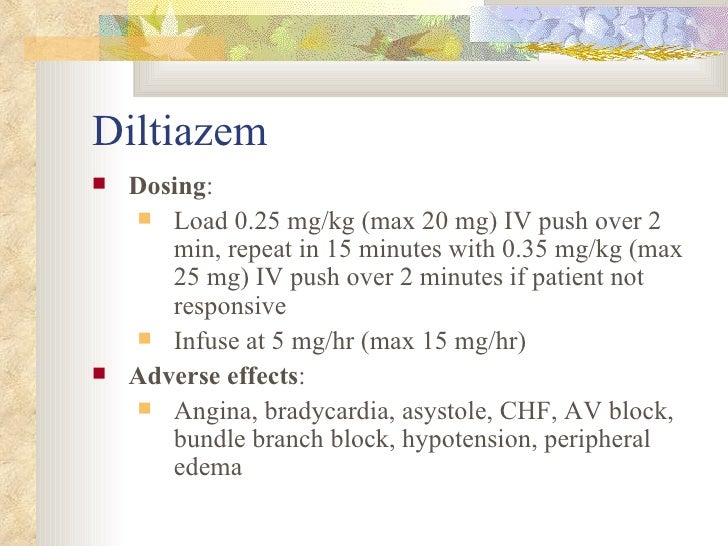
Antiarrhythmics which may be used are procainamide or ibutilide.


Blockade of the AV node may merely cause a greater dominance of the accessory pathway, exacerbating matters (to a certain extent, the AV node and the accessory pathway are competing for control of the ventricle). beta-blockers, calcium channel blockers, or amiodarone). AF with an accessory tract shouldn't be treated with medications that impair the AV node (eg.Morphology varies between different beats (some beats are fusion complexes if the AV node and the accessory pathway fire at a similar time).Wide-complex beats can result from transmission over the accessory pathway.Irregularly irregular heart rate that may be extremely fast (e.g.AF with an accessory pathway produces a fairly distinctive pattern of EKG findings:.This is dangerous because the extremely fast and uncoordinated contractions of the ventricle can promote ventricular tachycardia or cardiovascular collapse.
#Cardizem drip plus
Immediately pushing the heart rate down to a “normal” range (e.g., >200, consider the possibility of an accessory tract (AF plus Wolff Parkinson White).

These situations are different from AF in other contexts, for example:.(2) A patient who was previously in sinus rhythm develops new-onset AF (NOAF) while in the ICU, secondary to the physiologic stress of critical illness (e.g., secondary to sepsis or pulmonary embolism).(1) A patient with chronic AF develops critical illness.( 29627355) The two most common scenarios are: AF is the most common arrhythmia encountered in the ICU.Overall approach: agent selection for rate control:


 0 kommentar(er)
0 kommentar(er)
